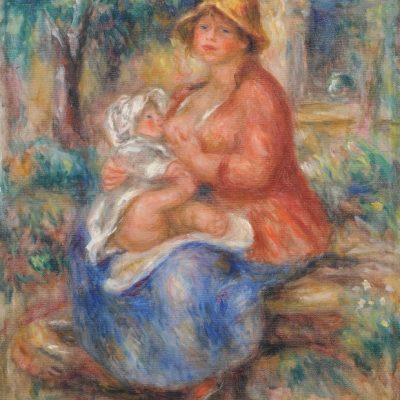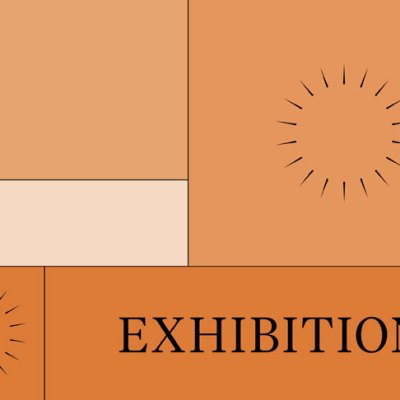‘I occupy my spare time going to see pictures, and sooner or later I was bound to admit…I’ve made a number of acquisitions,’ the Danish insurance magnate Wilhelm Hansen confessed to his wife Henny in a letter from Paris in September 1916. A keen collector of Danish art, Hansen had been educating himself in French painting since his first business trips to the French capital in the early 1890s. Within two short years, between 1916–18, he had amassed a sizeable collection of French 19th-century painting from the Barbizon School to the Post-Impressionists.
The fact that there was a war on didn’t stop him; the chance of a ‘bonne affaire’ only whet his appetite. Prevented from travelling to Paris in person, he relied on the advice of the veteran critic Théodore Duret, an early champion of Impressionism and a close friend of Manet. It was through Duret that Hansen acquired Manet’s late still life, Basket of Pears (1882), at a time when, Duret assured him, Manets were ‘introuvables’. The painting became a favourite possession, brought out after lunch as an ‘extra dessert’ to amuse guests at Ordrupgaard, the Hansens’ suburban mansion set in its own park north of Copenhagen.
Coin de jardin à Éragny (la maison de l’artiste) (1897), Camille Pissarro, Ordrupgaard Collection, Copenhagen. Photo: Anders Sune Berg; © Ordrupgaard, Copenhagen

Those delicious pears, lightly dusted by the artist’s brush, are just one of the delights of ‘The Hansens’ Secret Garden’, an exhibition of over 40 French paintings from the Ordrupgaard Collection at the Musée Jacquemart-André in Paris. A systematic collector, Hansen liked to acquire a representative selection of an artist’s work, and the show features groups of works by Corot, Monet, Pissarro, Sisley and Gauguin – the latter an artist in whom Hansen had a particular interest because of his Danish-born wife. The earliest work by Gauguin in the exhibition, the painting of his sleeping daughter Aline titled The Little One Is Dreaming, Study (1881), was acquired direct from the artist’s widow Mette.
Hansen made some interesting choices. Among the six Corots on display is a twilight landscape with foreground figures identified as Hamlet and the Gravedigger (c. 1870–75) – a rare literary subject – while the three Courbets include the curious snow scene, The Ruse, Roe Deer Hunting Episode (Franche-Comté) (1866), in which the bounding animals appear to be collaged onto the crisp white impasto of the ground beneath.
The Ruse, Roe Deer Hunting Episode (Franche-Comté) (1866), Gustave Courbet (1819–77). Ordrupgaard Collection, Copenhagen. © Ordrupgaard, Copenhagen

The Ruse was one of Hansen’s later acquisitions; Berthe Morisot’s Woman with a Fan, Portrait of Madame Marie Hubbard (1874) was one of his first. Depicting a friend of the artist’s mother, the respectable wife of a prominent civil servant, reclining fully clothed on a bed, it’s a tongue-in-cheek homage to Manet’s Olympia. The model’s gaze is as provocative as in Manet’s painting, but the hint of a smile playing on her lips smacks of a female conspiracy to debunk a male fantasy. It’s a marvellous picture.
The four Monets on display span four decades, from the foggy Le Pont de Waterloo, temps gris (c. 1903) to the crystal clear Chailly Road through the Forest of Fontainebleau (1865), the intended setting for a youthful ‘déjeuner sur l’herbe’ that was never painted. Similarly, the sfumato of Degas’s Woman Combing Her Hair (1891), conjured from the turpsy paint he favoured as his sight failed, contrasts with the definition of the earlier Courtyard of a House (New Orleans, sketch) (1873), an unfinished painting of his young American relatives that confirms the critic Edmond Duranty’s comment at the time that Degas’s paintings were ‘impregnated with drawing’.
Adam et Ève (1902), Paul Gauguin (1848–1903). Ordrupgaard Collection, Copenhagen. Photo: Anders Sune Berg; © Ordrupgaard, Copenhagen

In 1918, impatient to move faster, Hansen formed a consortium with other collectors and dealers to buy up whole collections and divide the proceeds. This was how he acquired three key works by Gauguin: Landscape at Pont-Aven (1888); Blue Trees: Your Turn Will Come, My Beauty! (1888); and the late Adam and Eve (1902) with its melancholy self-portrait of the 54-year old artist turning away from a young Eve in Eden, painted on the Marquesas Islands the year before he died. The consortium also delivered a bosky Baigneuses (c. 1895) by Cézanne and a Matisse still life of Flowers and Fruits (1909), as fresh as a daisy.
The collapse of the Danish Landmandsbank in September 1922 put a spoke in Hansen’s wheel: forced to liquidate half his collection of French paintings in a hurry, he offered them to the Danish state for 1m kroner, but the state, as a beneficiary of his will, preferred to wait. Fortunately, foreign collectors rode to the rescue and in just over a year the indefatigable Hansen was back in the black and back in the market, plugging gaps in his collection with 40 new additions.
A few years earlier he and Henny had built a gallery at Ordrupgaard to house their French paintings, opening it to the public free of charge on Mondays. When Henny died in 1951, 15 years after Wilhelm, she improved on her husband’s promise to the Danish state and threw in Ordrupgaard with the collection.
‘The Hansens’ Secret Garden: The Ordrupgaard Collection’ is at Musée Jacquemart-André until 22 January 2018.



